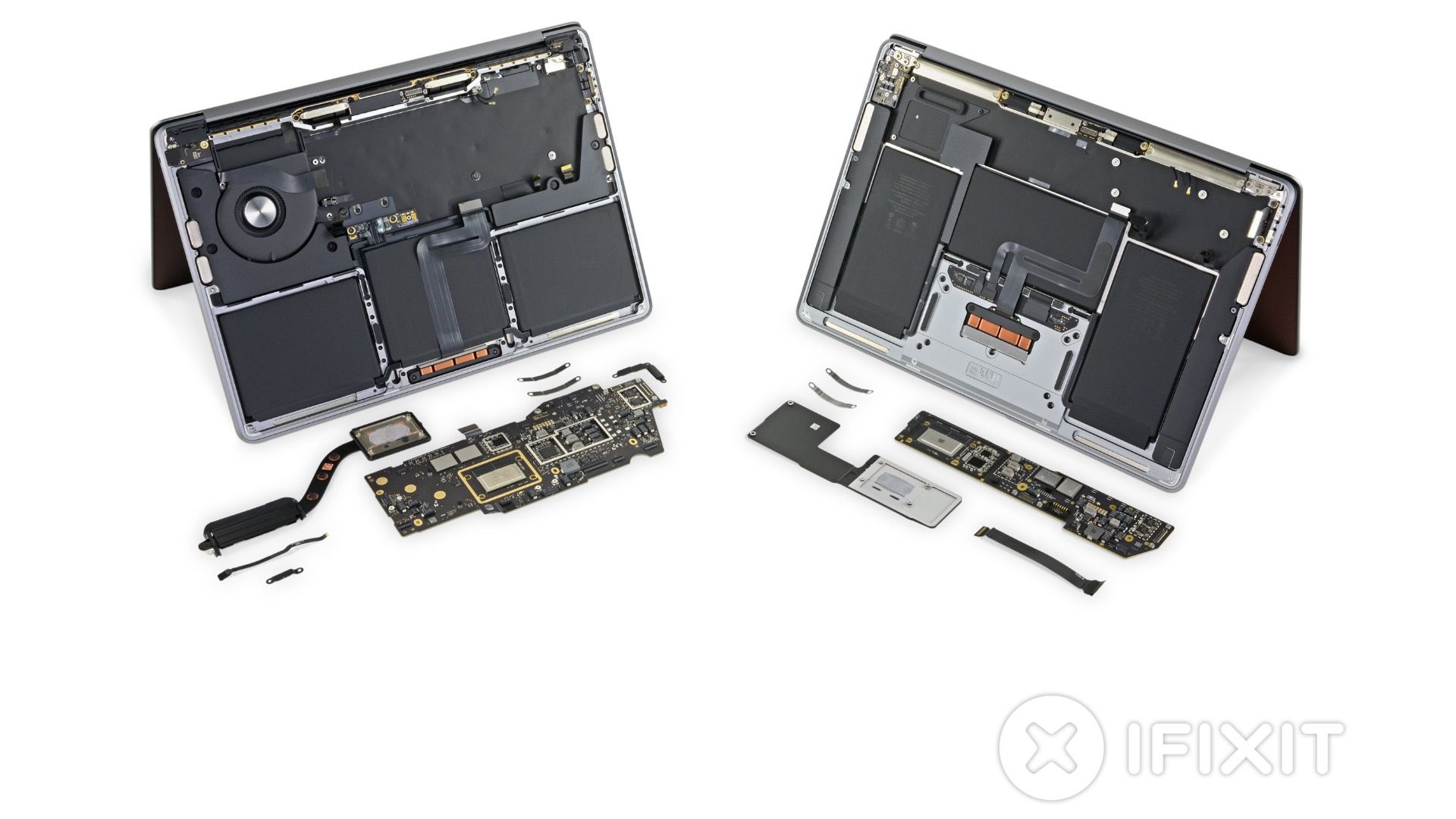Apple's new line of MacBooks dumped Intel in favor of Apple's new M1 system on chips (SOCs). On the outside, they look suspiciously similar to the classic Intel MacBook. If you're wondering what changed on the inside, our friends at iFixit tore the new notebooks apart. It's the stuff that's not there that might surprise you.
For instance, the MacBook Air doesn't have a fan at all. On the plus side, getting rid of the fan means the machine runs completely quiet. However, its removal didn't add more battery as some may have hoped. Instead, Apple has added a heat spreader to help keep the machine cool.
At first glance, not having a fan may seem like a downside, but you have to remember that Apple's iPhones and iPads have been kicking ass in performance for quite some time now and neither have fans in them. With the amount of performance you get out of this machine, you could potentially throw out your old laptop.
On the other side of things, you'd think the MacBook Pro would feature a completely different cooling system, based on early reviews. You'd be wrong. iFixit found that the fan used in the M1 Pro is exactly the same one found in the latest generation Intel model. But, thanks to much better efficiency from Apple's SoC, the fan doesn't spin as often. And when it does, it's whisper quiet.
Both notebooks use the same M1 chip, but Apple uses a method called "binning" to differentiate its lower end machine. To put that into laymen's terms, all M1 chips have eight GPU cores but some of them have an eighth core that either doesn't function completely or is not up to Apple's standards. So, instead of just tossing them out, the company simply disables the eighth core and ships it as a seven-core model. That's why there's a version of the MacBook Air with a seven-core GPU while all other models have eight.
Of course, neither of these notebooks were upgradeable in the past and that doesn't suddenly change because of M1. That means you'll need to be very careful about what you buy when you initially order your computer. What you see is what you get. And this time around, you won't have a choice of processor and the RAM is integrated right into the SoC. All you can choose from is storage and memory, which are capped at 2TB and 16GB respectively.
As always, iFixit does a masterful job of tearing apart the latest gadgets and giving us an idea of how hard it is to repair and what's changed. Check out the full teardown to see side by side comparisons of the new MacBook internals against Intel Models.
Source: iFixit

